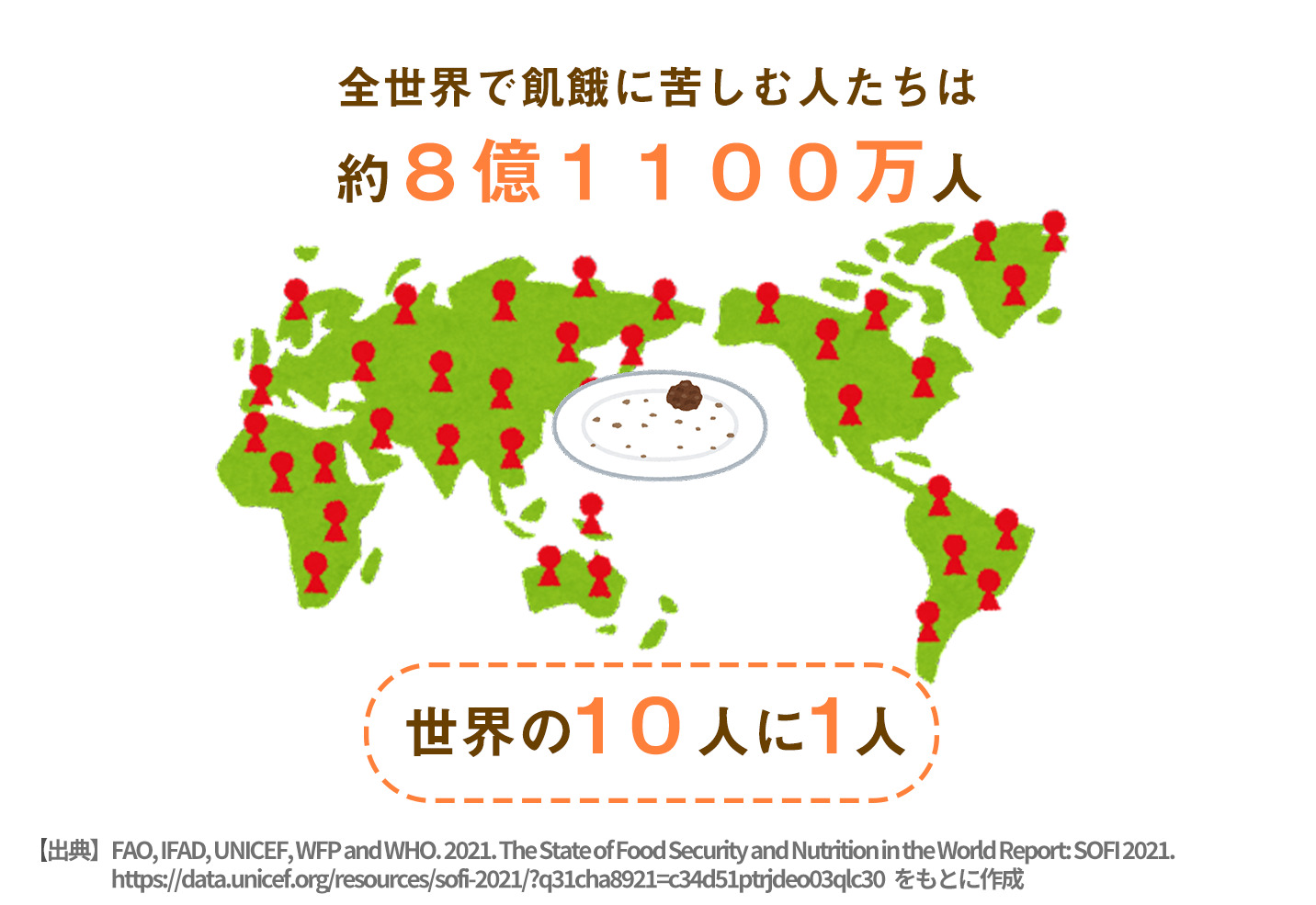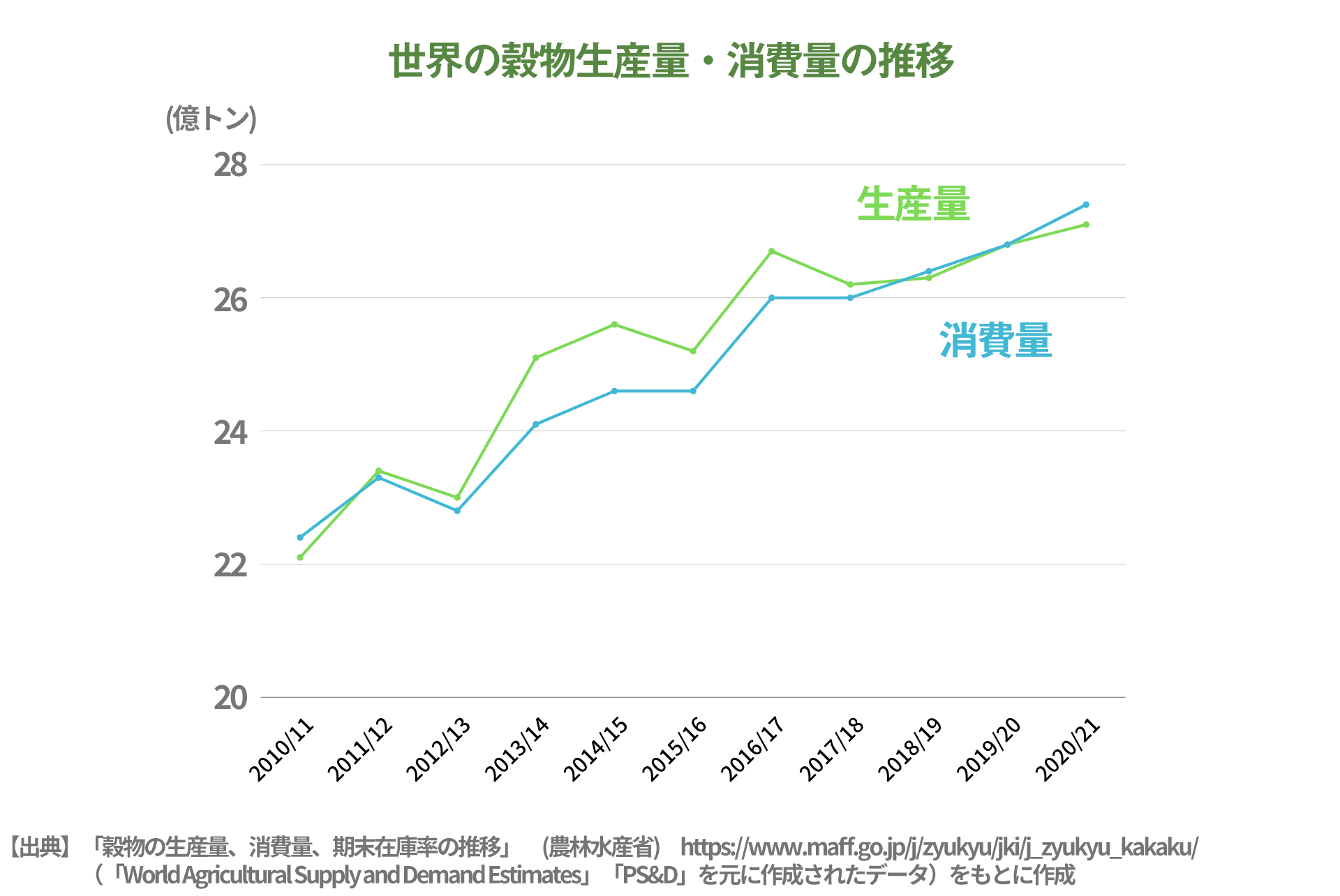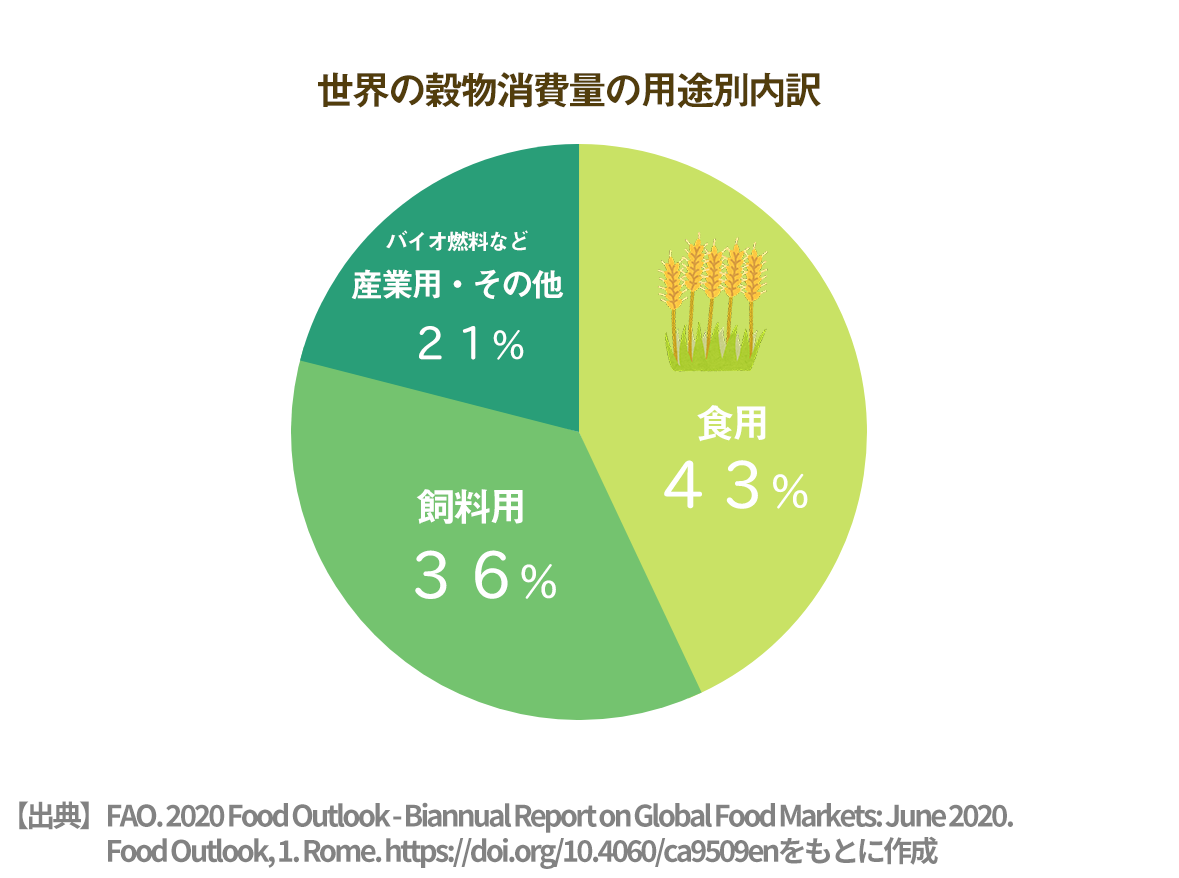Food, an essential part of human life, is a major theme in the SDGs. Food loss is closely related to global food and hunger issues.
World Hunger Issues

The State of Food Security and Nutrition in the World Report (SOFI) published in July 2021 by five UN agencies (FAO, IFAD, UNICEF, WFP, WHO), estimates that up to 811 million people worldwide suffer from hunger. This is a sharp increase from the 2019 data and is believed to be due to the impact of the new coronavirus infection (COVID-19).
*1[Source] FAO, IFAD, UNICEF, WFP and WHO. 2021. “The State of Food Security and Nutrition in the World Report: SOFI” https://data.unicef .org/resources/sofi-2021/?q31cha8921=c34d51ptrjdeo03qlc30
Is there a shortage of food in the world?

Up to 811 million people are without enough food to eat, but this does not mean that there is not enough food in the world. The world's annual grain consumption in 2020 is 2.74 billion tons*2, and if the world's grain were distributed equally among the world's population of 7.875 billion (as of April 2021)*3, 2.7 billion tons / 7.8 billion people = 346 kg (the amount of grain each person can consume per year). The standard amount of grain consumed per person per year is estimated to be about 180 kg, which, when combined with inventories and the production of food other than grain, means that there is enough food to go around and that there is never a shortage. The world's grain consumption is on the increase due to population growth and rising income levels in developing countries, but the production volume is also on the rise.
*2 “Trends in Grain Production, Consumption, and End-of-Year Inventory Rates” (Ministry of Agriculture, Forestry and Fisheries)
https://www.maff.go.jp/j/zyukyu/jki/j_zyukyu_kakaku/ (Data based on “World Agricultural Supply and Demand Estimates” and “PS&D”)
*3 “The State of World Population 2021,” United Nations Population Fund (UNFPA)
https://test-global-unfpa.pantheonsite.io/sites/default/files/pub-pdf/SoWP2021_Report_-_EN_web.3.21_0.pdf
Production of grain not for eating

Why is it that the number of people suffering from hunger is increasing even though enough grain is produced to feed everyone in the world? One reason is that 43%*4 of the world's grain production (2.7 billion tons in 2020) is used for human consumption, but the rest is used for industrial purposes such as animal feed and biofuels.

Grains are not only used for human consumption, but 36%*5 of grains are used as livestock feed. According to data from the Ministry of Agriculture, Forestry and Fisheries, 11 kg of grain is needed to produce 1 kg of beef, 7 kg of grain for 1 kg of pork, 4 kg for 1 kg of chicken meat, and 3 kg for 1 kg of eggs*6. Due to changes in dietary habits, population growth, overproduction in developed countries, and saturated diets, the amount of meat and eggs eaten has increased, resulting in increased consumption of grains for animal feed. In addition, consumption of grains for food and feed is also expanding, while consumption of grains as biofuels is increasing. Soaring grain prices are a serious problem for developing countries that depend on imports for their staple foods.
4*5 [Source] FAO. 2020 Food Outlook - Biannual Report on Global Food Markets: June 2020. Calculated based on the website of Food Outlook, 1. Rome. .
6 [Source] “Do you know? Japan's dietary situation in meals” October 2015 (Ministry of Agriculture, Forestry and Fisheries). https://www.maff.go.jp/chushi/jikyu/pdf/shoku_part1.pdf
Major Causes of Food Loss in the World
While people suffer from hunger, according to the Food and Agriculture Organization of the United Nations (FAO), about one-third of the food produced, or 1.3 billion tons*7 of food that is still edible, is wasted every year. Reducing food loss is a major challenge in solving the food problem. In food distribution from production to processing, sales, and consumption, developed countries and developing countries have their own distinctive causes of food loss.
key point
Developed countries
・High amount of food waste per consumer
・High loss from processing to wholesale/retail and to consumers
・Losses due to overproduction
・Losses due to large quantity of products on display at the point of supply and a wide range of products and brands that reach their sell-by date before some of them are sold.
・High visual quality standards for perishable products
・Mindset that it's cheaper to throw away rather than to reuse or recycle
・Inadequate purchase planning and expiration dates by consumers who can afford to throw food away.
key point
Developing countries
・Very little food is thrown away at the consumer stage.
・More than 40% of food loss occurs at the post-harvest and processing stages
・Many losses are due to inadequate harvesting techniques, processing facilities, storage and cooling facilities in harsh climates, and inadequate infrastructure.
・Losses due to inadequate market systems
→ Very few wholesale and retail facilities provide adequate storage and marketing conditions; markets are often small, unsanitary, and without refrigeration facilities
Source: ©FAO 2011 “Global Food Loss and Food Waste” based on http://jaicaf.or.jp/fao/publication/shoseki_2011_1.pdf
In developed countries, it is necessary to fundamentally change attitudes and business practices of mass production and mass consumption. This also requires raising consumers' awareness of food loss. In developing countries, there is an urgent need to set up market systems, including infrastructure development, to protect the livelihood of producers and ensure that they have enough food to survive. There are various causes of food problems and food loss in the world, but in today's world of active international trade, food distribution from production to consumption is connected to the entire world and is a problem to be tackled worldwide.
*7 [Source] © FAO 2011 “Global Food Loss and Food Waste” page5 http://www.fao.org/fileadmin/user_upload/suistainability/pdf/Global_Food_Losses_and_Food_Waste. pdf

